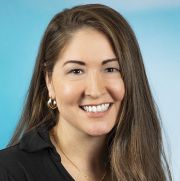As a radiologist, I am a physician whose responsibility and expertise is to carefully review medical imaging (e.g. radiographs, CT, ultrasound, MRI, PET) to detect abnormal findings or deem a medical imaging test “normal.” Since high school, my love of science and technology has been intertwined with appreciation for, creation of, and education in the visual arts. Radiology has been the perfect career combining visual skills, deductive reasoning, and understanding the intersections of anatomy, physiology, and disease. Participating in the Harvard Macy Institute Art Museum-based Health Professions Education Fellowship has not only exposed me to techniques highlighting similar skills that are cultivated in radiology practice but also to push emotional boundaries farther. This experience has also introduced me to my co-fellows - other passionate educators connecting, innovating, and working together to change the future of medicine and medical education.
Art museum-based education techniques allow us to focus our attention - not only on the details we see but also encourage us to critically review how our knowledge and past experiences work together to influence how we “interpret” an image. Whether a team exercise in Visual Thinking Strategies (VTS) or an individual Personal Response Tour shared within a group, we are invited to look at images and experience them with both analytical and experiential lenses.
In my field, where noticing subtle but important details in images are key to early detection of cancer or infection, when do we stop looking? How do we know we have not missed something? When can we call a study “normal?” How do we sit with that uncertainty?
Looking at art through a guided session can relive many aspects of medicine - gathering visual cues, communication, active listening, analysis of findings, and open thinking with reference to one’s own knowledge and experience base. A critical look at art allows us to examine what potential biases and experiences shape our opinions. This also reflects how individuals can experience art so differently. I was struck by this while leading a personal response tour with a small group of medical students. The students spent time reviewing images and were asked to choose an image that either brought them a feeling of joy or sadness. As we went through images, hearing which students were drawn to which images, two students had selected the same image. One student discussed how the piece with a large segment of blue reminded them of the ocean and great joy, while the other had found the technique of the piece to be irregular, jolting, and unsettling and brought them sadness. This side by side reflection highlighted that we experience the same image or situation with different lenses.
Utilizing art museum-based techniques in medical education allow us to look at each patient like a new image - what is going on, what more can we find, and what do we see that makes us say that? We push ourselves and each other to truly see our patients . Can we find more, ask more, listen to others, build on findings, think critically, and render a thoughtful and evidence-based working diagnosis? Look with different lenses and views. What does our patient see? These techniques highlight the individual and team-sport approach to medicine yet also teaches us to sit with feelings of curiosity, investigation, and uncertainty.
How can we build strong, prepared, caring physicians and physician-leaders? I can picture a way.
Did you know that the Harvard Macy Institute Community Blog has had more than 300 posts? Previous blog posts have explored topics including the art of education, digital storytelling, and striking a chord?
Sarah S. Milla

Sarah Sarvis Milla, MD, FAAP (Museum ’21) is Professor of Radiology and Pediatrics at University of Colorado School of Medicine and Chief of Radiology at Children’s Hospital Colorado. Sarah is the Chair of the Education Curriculum Committee for the Society for Pediatric Radiology and the President-Elect of the Society of Chiefs of Radiology at Children’s Hospitals. She is a passionate educator, researcher, and advocate for professional development and compassionate leadership. Sarah can be followed on Twitter or LinkedIn.

